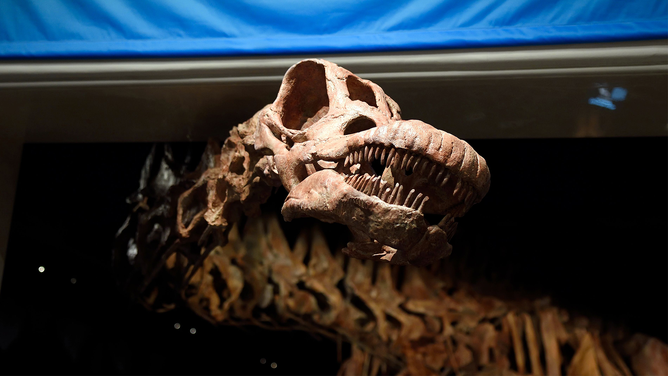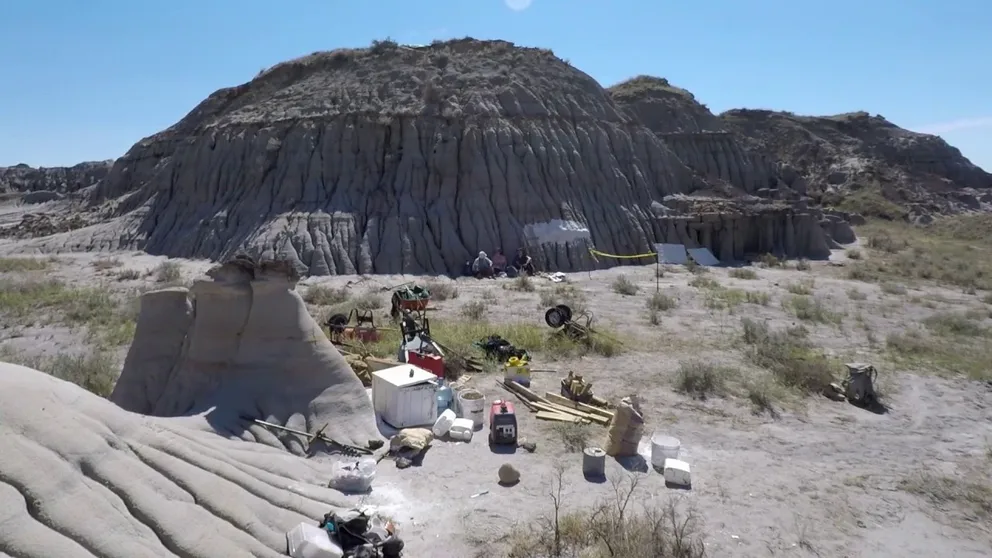Discovery of 256 fossilized titanosaur eggs sheds new light on dinosaur species
The research, which was published in the journal PLOS ONE, documents fieldwork between 2017 and 2020 that led to the discovery of 92 nests and 256 eggs that were located in the Lamenta Formation, rock layers that are notable for dinosaur fossils.
NOAA simulates tsunami from dinosaur-killing asteroid
A 6-mile-wide asteroid struck the Earth some 66 million years ago and generated a tsunami that created waves 2.5 miles high as it crashed ashore. NOAA has now created a simulation of the event. (NOAA Video)
Researchers at Delhi University in India say they have uncovered a plethora of titanosaur eggs that shed new light on how the dinosaur species reproduced and cared for their young.
The research, published in the journal PLOS ONE, documents fieldwork between 2017 and 2020 that led to the discovery of 92 nests and 256 eggs located in the Lamenta Formation – rock layers that are notable for dinosaur fossils.

FILE - The Titanosaur, the largest dinosaur ever displayed at the American Museum of Natural History, is unveiled at a news conference January 14, 2016 in New York.
(DON EMMERT/AFP / Getty Images)
Scientists identified six "oospecies" or egg species, which points to a possible high diversity in dinosaur groups found in India.
In addition, the scientists found "ovum-in-ovo" eggs or multi-shelled eggs, and it was the first time that had been discovered in the nests of titanosaurs. They are usually found in birds.
DINOSAUR TRACKS UNVEILED IN TEXAS BY EXTREME DROUGHT CONDITIONS
Time-lapse video of 'dinosaur mummy' excavation in Canada
This video of an excavation at Dinosaur Provincial Park in Alberta, Canada, was recorded over 10 days.
With the discovery of the multi-shelled eggs, researchers now believe this group of dinosaurs was similar to birds, making them capable of sequentially laying their eggs
Because of this finding, scientists believe there are similarities in reproductive systems in reptiles and birds.
The dinosaur nests were made up of egg clutches in three patterns: circular, combination and linear. And scientists believe that once they laid their eggs, they didn’t stick around to care for their young.
"Parental care must have been absent as the size difference between juvenile and parent dinosaur is enormous and clutches are closely spaced," the scientists wrote. "This also supports precocial behavior of juveniles which must have left clutches soon after hatching."
So, it's believed that soon after the dinosaurs hatched, they left the nest to explore the world on their own.

